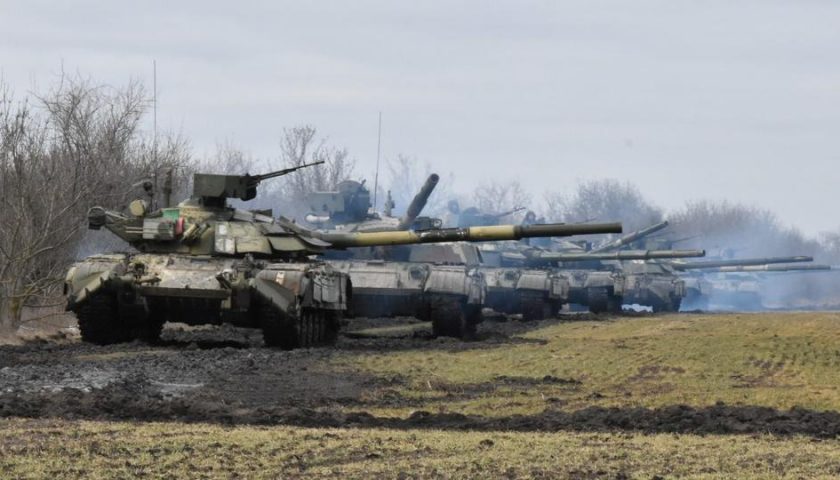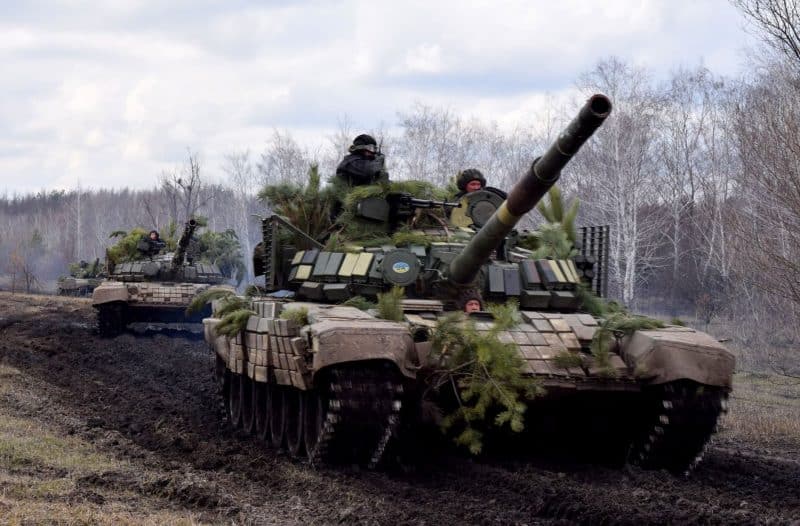If it was a significant factor to describe the year 2021, apart from the Covid crisis, it is undoubtedly the significant increase in direct tensions between many states, with the risk, very real now, of seeing the specter resurface. conflicts between great powers on a regional or even global scale. In addition, and unlike the tensions and conflicts that marked the post-Cold War period, these emerging wars threaten, in their vast majority, to bring in their wake the opposition of nuclear superpowers, and even to have an effect. trigger between them, so that the deterioration of the situation for one of them can have significant consequences for the others. This series of articles presents these various conflicts which threaten to begin in 2022, their origins as well as their potential consequences.
Origins of the Ukrainian conflict
Of all the developing conflicts, the confrontation which looms between Ukraine and Russia is undoubtedly the one which presents the most immediate risks of conflagration. Since the events in Maidan Square in 2013, and the departure under popular pressure from President Yanukovych, relations between Kiev and Moscow have been particularly strained, especially since Russia militarily annexed Crimea in February 2014, then instrumentalized the opposition between East Russian speakers and West Ukrainians by actively supporting the military revolt in Donbass. Since then, this conflict, which peaked in intensity between 2014 and 2015, has claimed more than 14.000 lives, and has firmly radicalized Ukrainian public opinion against Russia, and in favor of membership in NATO and the European Union.

For Moscow, however, there is no question of letting Kiev join the Western camps, in particular within NATO, which would allow the Ukrainian authorities to invoke Article 5 in the face of the Russian threat, but also of modernize their armies with high-tech military equipment. From then on, and for several years, the Russian armies have repeatedly mimicked the preparation of a major assault on Ukraine by concentrating important troops along its borders of Donbass, Crimea and more recently, since the subjugation of President Lukashenko after the popular revolts of 2020 fiercely suppressed with the help of Moscow, along the Belarusian border. These demonstrations of force had however deleterious effects for Moscow, by inciting the Ukraine and the Ukrainians to strengthen their armies and their determination to resist Russian pressures as well asto accelerate NATO membership now supported by more than 2/3 of Ukrainians, while at the same time, Europeans and Americans turned a deaf ear to the increasingly insistent demands of the Kremlin.
A new deployment of forces that worries
At the end of November 2021, new concentrations of Russian troops on the Ukrainian borders were observed, raising the risk of a military attack. But unlike previous deployments, the Russian armies this time deployed, in addition to combat units, numerous support units, as well as large reserve forces that could potentially allow rapid exploitation of the advances made by contact units, and causing many experts to fear that the Kremlin's objective would indeed be a direct and massive offensive, the first since the end of the Second World War on the European continent. According to satellite observations and press releases from Western intelligence services, today no less than 100.000 men and some sixty combined arms battalion are deployed near the Ukrainian border, as well as many support units, i.e. nearly 40% of all active Russian armed forces, and more than all of the operational forces of the French Army.

West side, after United States, Great Britain and France were all committed to guaranteeing Ukraine's territorial integrity at the onset of the tensions, the rhetoric quickly shifted as the risk of effective Russian military intervention became more specific. Today, these 3 nuclear powers and permanent members of the United Nations Security Council, promise very severe sanctions against Russia in the event of an attack on Ukraine, but exclude military intervention to support Kiev, as well as the export of advanced military materials likely to "provoke" Moscow.
On the strength of this Western retreat, and the confidence that the Kremlin has in its army, which in a few years has regained a format and operational capabilities worthy of a superpower, the Russian authorities have issued an ultimatum to the United States, demanding from these that they no longer extend NATO to the East, making specific reference to Ukraine, Georgia but also to Finland and Sweden; the withdrawal of American and Western troops from Eastern European countries and former members of the USSR and the Warsaw Pact; as well as the commitment not to deploy nuclear weapons outside the national territory of each member. It goes without saying that these requirements, if implemented, would considerably weaken Western military and defensive power, and dangerously expose all NATO member countries in Eastern and Northern Europe to the Russian threat.
A complex balance of power
For now, therefore, 100.000 Russian soldiers, as well as a thousand combat tanks, three thousand armored infantry combat vehicles and personnel carriers, as well as 400 Russian combat planes and helicopters are deployed. along the Ukrainian border. The Ukrainian army, for its part, relies on a contingent of 170.000 men, 800 modern tanks and 2000 armored vehicles to cope with it. On paper, therefore, the forces seem balanced, especially as the Ukrainian forces have the advantage of being in a defensive position. In detail, however, it seems that this “strategic” balance of power is far from being as balanced as it seems.

Indeed, the Russian line units, those that make up the sixty BGTs deployed along the Ukrainian border, are mostly made up of professional soldiers, having had experience of combat in Syria and in the Donbass, and much better. equipped than Ukrainian units, especially in the fields of electronic warfare or artillery. In addition, the Russian forces have unparalleled air and naval power in Ukraine, and an extraordinary anti-aircraft capability, suggesting that the Russian armies could quickly ensure control of the skies in the event of a conflict. Faced with them, the Ukrainian armies are 75% made up of conscripts and volunteers, less trained and seasoned than the Russian forces. In addition, their equipment is mostly from reserves inherited from the Soviet Army, and very little of these materials have been modernized since. In addition, in order not to provoke Moscow's ire, Europeans and Americans limited exports of offensive military materials to Ukraine, which could have enabled Kiev to re-establish a balanced and dissuasive balance of power.
In fact, the balance of power between the Russian and Ukrainian armies is difficult to establish today. Despite its numerical power, the Ukrainian armies may well find themselves in a posture identical to that of the Iraqi armies during the first Gulf War, and be unable to take advantage of the defensive advantage in the face of firepower. and the modernity of Russian units. Under these conditions, resorting to a guerrilla-type defense, rather than a classic defensive strategy, could represent an attractive alternative for Kiev in the event of an attack, but would be unlikely to deter Moscow from an offensive if the decision had just been taken.
A situation temporarily frozen

75% of this article remains to read,
Subscribe to access it!
The Classic subscriptions provide access to
articles in their full version, and without advertising,
from 6,90 €.
Newsletter subscription
Register for the Meta-Defense Newsletter to receive the
latest fashion articles daily or weekly


Comments are closed.